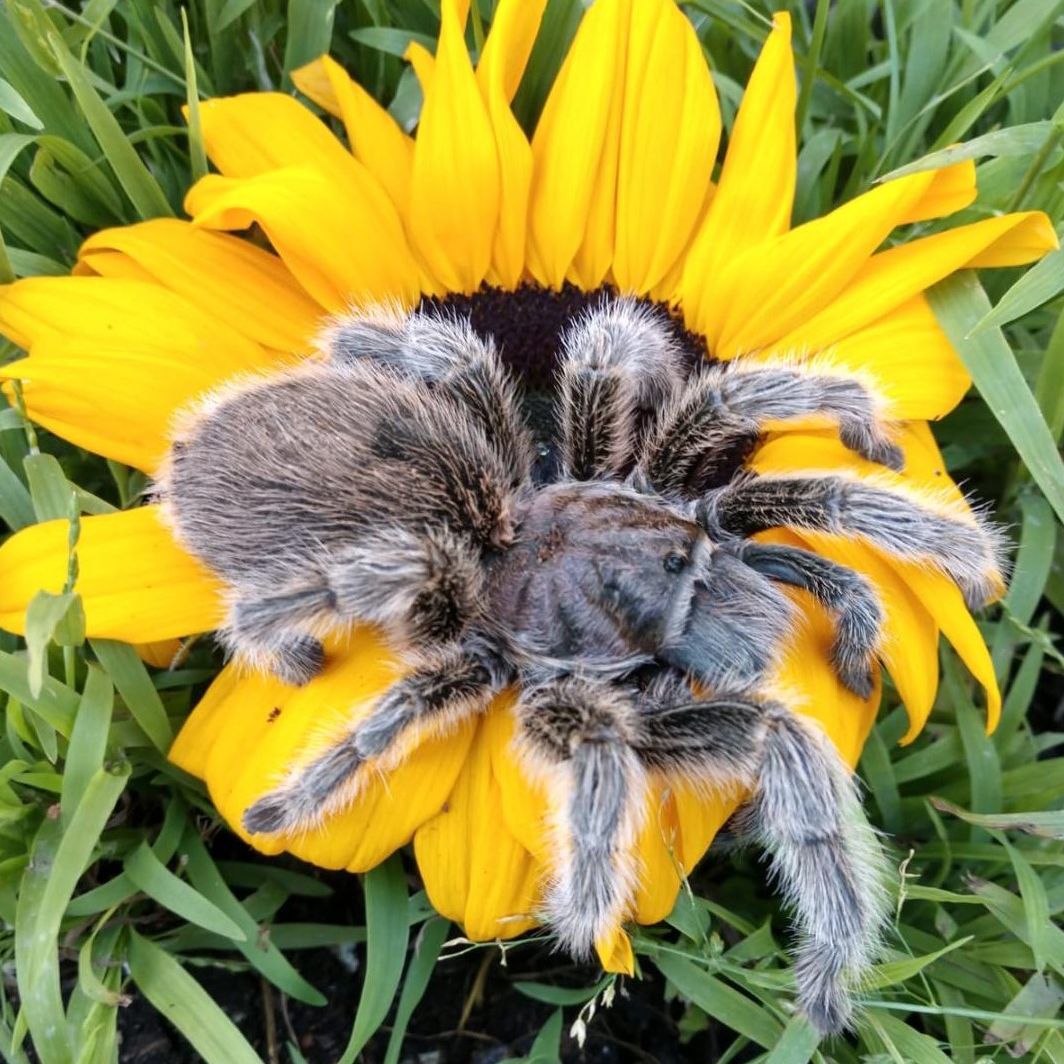Profile | Charlotte

-
BirthdayFemale, born circa 2011
-
SpeciesRose-haired tarantula
Grammostola rosea -
Professor ofHairs and fangs
-
Field of studyFood webs and spider webs
-
Food and Vet Care$24 per month | $288 each year
About the species
RANGE | The Chilean rose hair tarantula’s native habitat is the desert regions of Chile.
FUN FACTS | Tarantulas are spiders but not all spiders are tarantulas! While there are roughly 700 different species of spiders, the Chilean Rose-haired tarantula is the most common type of pet spider. Arachnids are a group of eight-legged animals that include spiders and scorpions, and are predators that mostly eat insects. These invertebrates rely on their exoskeleton for protection and muscle support. When they feel threatened, like many plants and some caterpillars, they rely on their bristle-like hairs, called uriticating hairs, that cause a variety of responses that include redness and swelling, itching and inflammation and even breathing or sight issues. They have movable fangs above their mouth—called chelcicerae—that are hollow and inject venom into their prey, typically immobilizing the animal. Their mouth is a straw-shaped tube so most food must be pre-digested by coating prey with digestive juices that are also secreted from the chelcicerae before they are sucked up by the mouth. These small animals hunt and eat insects and rodents which consume and contaminate our food supply as well as carry diseases that make animals and people very sick.
Meet Charlotte
Charlotte was previously owned as a pet. Her owner was moving cross-country and was concerned about her surviving the trip, so he started looking for someone to take her and called us.
While most tarantulas can be quite sedentary, Charlotte is very active. She climbs on and over her toys or furniture—especially small plastic or stuffed toys, including baby toys and small pet toys.
Likes
She is usually curious when we hang small baby toys on the wall of her enclosure, climbing the wall to investigate things like rattles and plastic keys. We have seen our tarantulas push small balls—ping-pong-ball-sized—across their enclosure. She is intrigued by reptile hides which she can crawl under and over, natural behaviors for this species. She has climbed fake plants and small structures that might typically be added to aquariums since they are the perfect size for this small creature
It is all about texture. They like to crawl over stuffed and plastic toys, especially appreciating items that they can crawl through. We use a lot of toddler learning toys since often have differnt shapes and textures on blocks, beads and balls that move on plastic coated wires or frames. Children’s bath toys, too—like rubber ducks! Whiffle balls of different sizes. Plastic chains to hang things and for them to climb. Reptile and small animal loungers made of various materials—rope, rock, cloth, etc.
Wishlist
-
Play structuresplastic chains and structures for small animals, made of rope, rock, or cloth
-
Reptile hideawaysdesigned for small reptiles
-
Toddler toysplastic whiffle balls, bath toys, and learning toys with different shapes and textures on blocks, beads, and balls that move on plastic-coated wires or frames, especially those she can crawl through